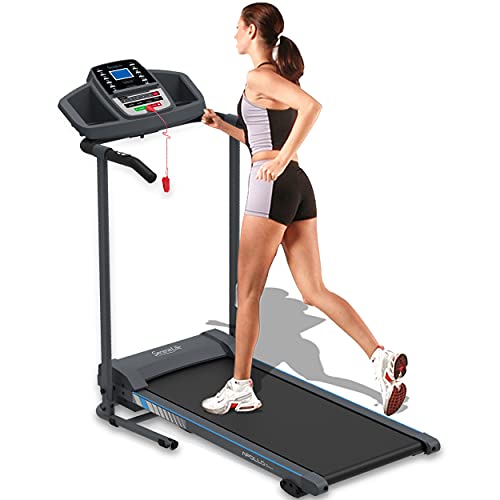Non-Electric Walking Pads: The Future of At-Home Fitness
In the age of digitalization and automation, it might seem counterintuitive to go back to a more traditional and mechanical method to physical fitness. However, non-electric walking pads have actually emerged as an increasing popular choice for individuals seeking a sustainable, straightforward option for keeping their physical health without counting on innovation. In this article, we will explore the benefits, features, and considerations surrounding non-electric walking pads, ultimately making the case for their place in contemporary physical fitness regimes.
What is a Non-Electric Walking Pad?
A non-electric walking pad is a manually run treadmill that needs no power source besides the force produced by the user's motion. These gadgets are designed to accommodate walking and running, making them suitable for both light workouts and more extreme exercises-- while getting rid of the requirement for electricity.
Secret Features of Non-Electric Walking Pads
| Function | Description |
|---|---|
| Manual Operation | Relocations with the user's weight and movement. |
| Foldable Design | Easy to keep and carry. |
| Adjustable Incline | Allows users to personalize the exercise strength. |
| Space-Efficient | Perfect for little home. |
| Sturdiness | Constructed with robust products for durability. |
| Budget friendly | Lower preliminary financial investment than electric designs. |
Benefits of Non-Electric Walking Pads
Non-electric walking pads featured a range of advantages that make them a desirable choice for lots of physical fitness lovers. Here are a few of the main benefits:
1. Eco-Friendly
One of the most engaging factors to choose a non-electric walking pad is that it needs no electricity. In a period where environmental impact is a major concern, utilizing less energy adds to sustainability.
2. Affordable
Non-electric walking pads are usually more economical to produce and acquire than their electric equivalents. They also eliminate ongoing electricity costs. For users searching for an affordable method to stay fit in the house, this is a significant benefit.
3. Enhanced Stability and Safety
Because non-electric walking pads generally have a lower speed, users have higher control over their pace. This makes them safer for those who might fight with balance or coordination, such as the senior.
4. Low Maintenance
Manual walking pads need very little upkeep compared to electric models, which might need routine maintenance and occasional part replacements. This dependability can be a plus for hectic individuals.
5. Versatile Workouts
Numerous designs provide adjustable inclines that enable users to boost their exercises. This function indicates that anyone can customize their workout regimen to meet their particular objectives, whether it's weight reduction or endurance training.
Factors to Consider Before Purchasing
| Aspect | Description |
|---|---|
| Size | Ensure it fits your designated exercise space. |
| Weight Capacity | Inspect the optimum user weight to make sure toughness. |
| Incline Levels | Determine the variety of incline levels appropriate for your fitness goals. |
| Mobility | Examine how easy it is to move and keep. |
| Construct Quality | Opt for durable materials to make sure durability. |
1. Size Matters
Before buying, consider where the walking pad will be used. Guarantee it fits conveniently in your desired space, allowing enough space for safe movement.
2. Know Your Weight Capacity
The majority of walking pads come with a specific weight limit. Make sure to validate that it can safely support your weight for prolonged use.
3. Think About Incline Levels
If you plan part of your physical fitness regime around incline training, explore designs that provide several incline levels for diverse intensity.
4. Assess Portability
If you have actually limited space, look for foldable designs that can be quickly stored away when not in usage.
5. Concentrate On Build Quality
A sound walking pad will extend the life of your devices. Select models with positive user examines about durability and quality.
Frequently Asked Questions
1. Are non-electric walking pads simple to use?
Yes, they are uncomplicated to run-- you simply step onto the pad and begin walking! The movement of walking creates the movement.
2. What is the weight limit for non-electric walking pads?
Weight limitations vary by design, normally ranging from 200 to 350 pounds. Always check hometreadmills.uk before acquiring.
3. Is it suitable for individuals of any ages?
Normally, yes-- it is much safer for older adults due to its lower speed. However, similar to any exercise program, individuals should consult a physician before beginning.
4. How does a non-electric walking pad compare to a standard treadmill?
Although both serve similar purposes, non-electric walking pads are more affordable, quieter, and energy-efficient. Conventional treadmills use sophisticated functions like digital screens and predetermined workout programs however featured higher expenses and maintenance.
5. Can you work on a non-electric walking pad?
Yes, many designs enable light running in addition to walking. Nevertheless, the experience may vary from electric treadmills, as users have to generate their motion.
Non-electric walking pads represent a practical, sustainable, and inexpensive solution for those intending to stay active while decreasing their environmental footprint. With the ability to deliver efficient workouts with low maintenance costs, these walking pads may just be the best suitable for individuals and households looking for a no-fuss technique to physical fitness.
As the market for health and wellness continues to progress, non-electric walking pads are a suggestion that easy solutions can typically offer some of the very best results. Whether you are a beginner, a skilled physical fitness enthusiast, or somebody seeking to present regular motion into your lifestyle, buying a non-electric walking pad can be a smart and helpful choice.

